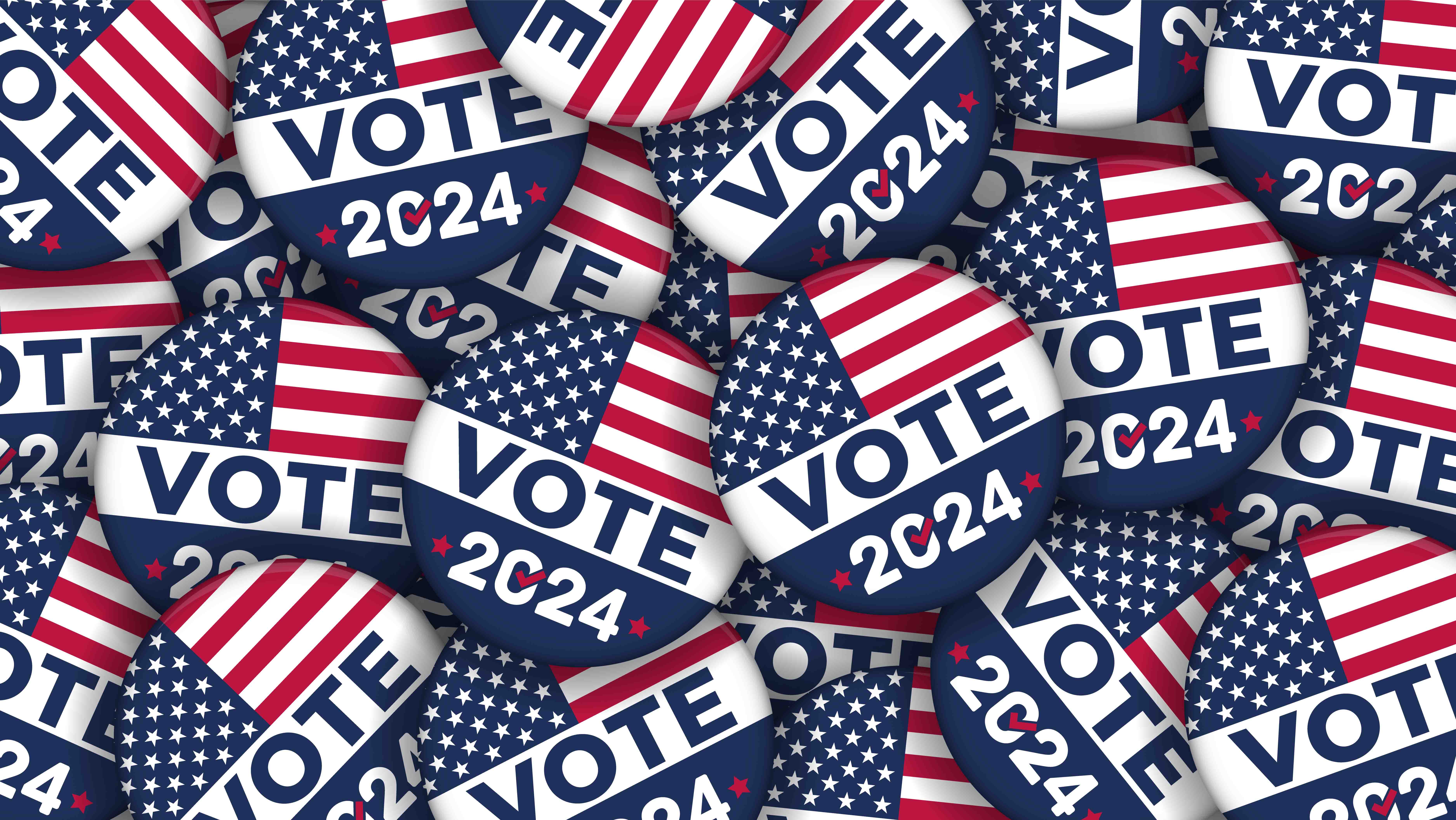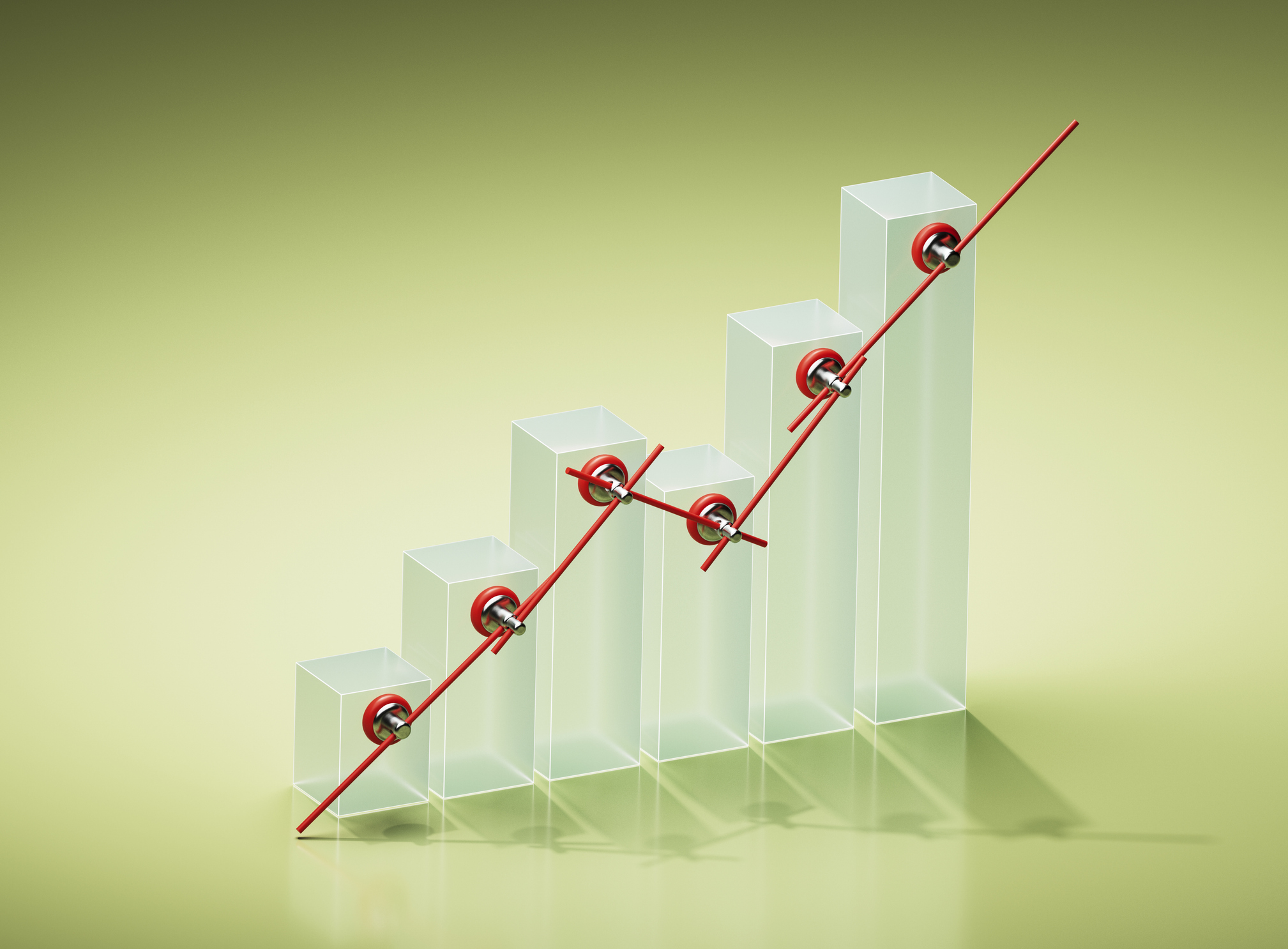Are You Better Off Now Than You Were Four Years Ago?
Determine if you are better off now — compare today's economy to 2020, from gas prices to employment.


“Are you better off now than you were four years ago?” So asked the 1980 presidential candidate, Ronald Reagan, channeling one of the main reasons we vote for one candidate over another: the economy.
That seemingly glib line helped propel him into the White House for the first of two terms. “It seemed to resonate with voters,” says Pete Earle, a senior research fellow at the American Institute for Economic Research. “Many people vote on the basis of kitchen table issues and how far their dollars go.”
The last few years have been tumultuous for the economy. The pandemic lockdowns and the surge in inflation rattled people. On Wall Street, the stock market and the bond market collapsed to eye-watering depths in 2022, and back in the last quarter of 2020, we were still grappling with the impact of the COVID-19 pandemic.
From just $107.88 $24.99 for Kiplinger Personal Finance
Become a smarter, better informed investor. Subscribe from just $107.88 $24.99, plus get up to 4 Special Issues

Sign up for Kiplinger’s Free Newsletters
Profit and prosper with the best of expert advice on investing, taxes, retirement, personal finance and more - straight to your e-mail.
Profit and prosper with the best of expert advice - straight to your e-mail.
Will this generation of voters solely look to their pocketbooks? It’s hard to tell, says Art Hogan, chief market strategist at B. Riley Wealth. People sometimes look only at what’s hurting them, not what helped them. For instance, some people may remember the surge in food prices but forget that wages have partially caught up. “The average person may say they are worse off because they can’t afford bacon,” he says. “They also seem to remember inflation going up, not when it comes down.”
Of course, every voter is different. Young voters may tend to focus more on the cost of paying off their student loans or buying their first home. As people approach retirement, they have different priorities, different concerns and different buying patterns.
Are you better off now? By the numbers
With that in mind, we’ve built a table of key economic and social indicators. The details include where the metric — such as the value of the S&P 500 — was in November 2020, and where it was recently.
We’ve marked each indicator as “better,” “worse” or “about the same.” We consider the overall rate of inflation, 21% over the period, as worse. But, generally, if a price goes up less than the overall inflation rate, then we count that as better. If, however, a price rises at a rate greater than inflation, it’s counted as worse. Conversely, if an asset value or income exceeds inflation, we count that as better.
| Indicator | November 2020 | July 2024 | Difference | Better? Worse? About the same? | Notes and comments |
|---|---|---|---|---|---|
| Consumer Price Index for Americans 62 and older (R-CPI-E) | 283.922 | 343.324 | Indicates inflation of 21% over the period, virtually the same as the overall CPI. | Worse | Inflation peaked at 9.1% in June 2022. In November 2020, the year-over-year inflation rate was 1.2%. In July of this year, it was 2.9% |
| Median personal income after inflation | $35,860 | $49,001 | On average, workers saw a 37% increase in pay. | Better | Row 1 - Cell 5 |
| S&P 500 | 3310 | 5522 | The index gained 67%, excluding dividends. | Better | Row 2 - Cell 5 |
| Average monthly Social Security check | $1,458 | $1,918 | That's a 32% increase, beating inflation by 10 points. | Better | Benefits rose 8.7% in 2023, the largest yearly increase in decades. |
| Median monthly traditional Medicare Part B premium | $144.60 | $ 174.70 | Up 21%, in line with inflation | About the same | Row 4 - Cell 5 |
| COVID deaths (monthly) | 53,248 | 2,207 | A decline of more than 95.9% | Better | Deaths peaked in January 2021, at 98,174 |
| Typical cost of a pair of hearing aids | $2,600 - $4,000 | $2,000 - $3,600 | Price cuts from 10% to 23% or more. | Better | Congress passed a law in 2017 allowing aids to be sold without prescriptions, taking effect in 2022. Less technologically sophisticated aids are available today for as low as $100 a pair. |
| Average cost of a new car | $ 39,295 | $48,401 | That's an increase of 23%, two points more than inflation | Worse | Car manufacturing was disrupted somewhat during the pandemic as some components couldn't be delivered. |
| Nursing home costs per month | $8,821 | $10,025 | That's an increase of 15% over the last four years, less than the inflation rate. | Better | Costs remain high, with the average private nursing home costing $10,025 a month and public nursing homes costing $8,929. |
| Average existing home prices | $311,000 | $427,000 | That's a 37% increase in value. | Better | Better for older homeowners who are selling than for younger ones who are buying. |
| Case-Shiller housing price index | 232 | 325 | That's a 40% increase | Better | Better for older owners than younger buyers. |
| Cost of borrowing: 30-year fixed rate mortgages | 2.78% | 6.73% | That's more than double the home loan interest rate. | Worse | The Federal Reserve raised interest rates to fight inflation. |
| Cost of borrowing: Credit cards | 14.65% | 23.17% | That's a 48% increase in credit card interest | Worse | The Federal Reserve raised interest rates to fight inflation. |
| Average price of a gallon of regular gasoline | $2.12 | $3.52 | A whopping 66% increase, three times the 21% increase in the CPI. | Worse | While prices were low in 2020 due to the decline in demand during the pandemic, price rises were likely tempered partly by increased oil production. U.S. crude oil output rose to 13.3 million barrels/day in July 2024, up from 10.5 million in early November 2020. |
| Food and beverage inflation CPI for seniors | 274.893 | 335.191 | That's a 22% increase, one point above the overall Senior CPI | Worse | Economists say much of food inflation likely results from rising fuel costs after Russia's 2022 invasion of Ukraine. |
| U.S. life expectancy | 78.93 | 79.25 | A modest increase, less than 1% | About the same | The figures are based on life expectancy at birth. |
| Cost of monthly electricity bill | $117 | $147 | A 26% increase, well in excess of the overall inflation rate. | Worse | Electric cars, crypto mining and AI chips require more electricity. The price of coal, which is commonly used for electricity generation, is also higher. |
| Number of job openings | 6.9 million | 8.2 million | That's a hefty increase in job openings | Better | Row 17 - Cell 5 |
| Unemployment rate | 6.7% | 4.3% | That's a significant improvement | Better | Row 18 - Cell 5 |
Table Sources: Bureau of Labor Statistics; Federal Reserve Bank of St. Louis; Y-Charts; USA Facts; Social Security Administration; Centers for Medicare & Medicaid Services; Audiology Island; Hearing Tracker; Senior Living; Consumer Affairs; Mortgage Bankers Association; Trading Economics; Wallet Hub; Cox Automotive; S&P Global; Centers for Disease Control and Prevention; Macrotrends; Smart Asset; Save on Energy; Our World in Data.
Note: This item first appeared in Kiplinger Retirement Report, our popular monthly periodical that covers key concerns of affluent older Americans who are retired or preparing for retirement. Subscribe for retirement advice that’s right on the money.
Read More
Profit and prosper with the best of Kiplinger's advice on investing, taxes, retirement, personal finance and much more. Delivered daily. Enter your email in the box and click Sign Me Up.

Simon Constable is co-author of The Wall Street Journal Guide to the 50 Economic Indicators That Really Matter.
-
 'Humbug!' Say Consumers, Despite Hot GDP: Stock Market Today
'Humbug!' Say Consumers, Despite Hot GDP: Stock Market Today"The stock market is not the economy," they say, but both things are up. Yet one survey says people are still feeling down in the middle of this complex season.
-
 The SEC Is Concerned for Older Investors and Retirement Savers. Here's What You Should Know
The SEC Is Concerned for Older Investors and Retirement Savers. Here's What You Should KnowThe SEC focusing on older investors, retirement and college savers, and private securities. Here's how those changes impact you.
-
 Vesting, Catch-Ups and Roths: The 401(k) Knowledge Quiz
Vesting, Catch-Ups and Roths: The 401(k) Knowledge QuizQuiz Test your understanding of key 401(k) concepts with our quick quiz.
-
 Why You Should Pay Attention to Company Guidance
Why You Should Pay Attention to Company GuidanceUnderstanding how corporate profit forecasts affect analysts’ estimates and stock ratings can help you make investment decisions.
-
 How to Protect Yourself and Others From a Troubled Adult Child: A Lesson from Real Life
How to Protect Yourself and Others From a Troubled Adult Child: A Lesson from Real LifeThis case of a violent adult son whose parents are in denial is an example of the extreme risks some parents face if they neglect essential safety precautions.
-
 To Build Client Relationships That Last, Embrace Simplicity
To Build Client Relationships That Last, Embrace SimplicityAs more automation becomes the norm, you can distinguish yourself as a financial professional by using technology wisely and prioritizing personal touches.
-
 Client Demand Is Forcing Financial Advisers to Specialize: How to Deliver
Client Demand Is Forcing Financial Advisers to Specialize: How to DeliverThe complexity of wealthy clients' needs — combined with AI and consumer demand — suggests the future of financial planning belongs to specialized experts.
-
 A Financial Planner Takes a Deep Dive Into How Charitable Trusts Benefit You and Your Favorite Charities
A Financial Planner Takes a Deep Dive Into How Charitable Trusts Benefit You and Your Favorite CharitiesThese dual-purpose tools let affluent families combine philanthropic goals with advanced tax planning to generate income, reduce estate taxes and preserve wealth.
-
 A 5-Step Plan for Parents of Children With Special Needs, From a Financial Planner
A 5-Step Plan for Parents of Children With Special Needs, From a Financial PlannerGuidance to help ensure your child's needs are supported now and in the future – while protecting your own financial well-being.
-
 How Financial Advisers Can Best Help Widowed and Divorced Women
How Financial Advisers Can Best Help Widowed and Divorced WomenApproaching conversations with empathy and compassion is key to helping them find clarity and confidence and take control of their financial futures.
-
 A Wealth Adviser Explains: 4 Times I'd Give the Green Light for a Roth Conversion (and 4 Times I'd Say It's a No-Go)
A Wealth Adviser Explains: 4 Times I'd Give the Green Light for a Roth Conversion (and 4 Times I'd Say It's a No-Go)Roth conversions should never be done on a whim — they're a product of careful timing and long-term tax considerations. So how can you tell whether to go ahead?